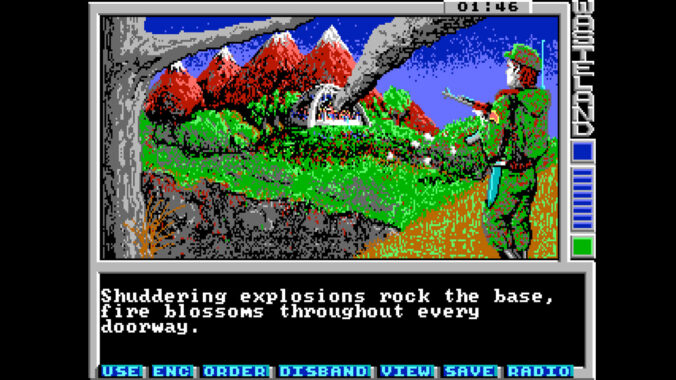After playing the Avernum Trilogy again, I decided to go back to the old classic Wasteland and its official and unofficial sequels. It was a bit more complicated than I expected. But before getting into that, let me try to untangle the serpentine saga of these games.
The history of the Wasteland and Fallout series is a tale of creative ambition, intellectual property disputes, and the persistence of a vision across decades and studios. It begins in 1988, in the twilight of the Cold War, when Interplay Productions released Wasteland, a groundbreaking post-nuclear role-playing game published by Electronic Arts. Set in a desolate American Southwest after a global thermonuclear conflict, Wasteland was one of the first CRPGs to offer a persistent world, moral complexity, and consequences for player choices. Its blend of bleak survivalism, dark humor, and open-ended gameplay laid the foundation for what would become a genre-defining legacy.
Despite its success and critical acclaim, Interplay found itself unable to produce an official sequel. Electronic Arts owned the Wasteland name, and negotiations between the two companies failed to secure a path forward. In response, Interplay attempted to carry the spirit of Wasteland forward under different guises. One such project was Fountain of Dreams (1990), a supposedly spiritual successor developed by EA without Interplay’s involvement. Set in a post-apocalyptic Florida, it was poorly received, criticized for its bugs, weak writing, and lack of polish. It was a pale shadow of its predecessor. Another would-be successor, called Meantime, was in development at Interplay and intended to use the Wasteland engine in a time-traveling storyline. However, the project was ultimately canceled, partially due to the declining commercial viability of the Apple II platform.
Unable to continue Wasteland in name, Interplay instead reimagined its thematic core. By the mid-1990s, the team led by producers like Tim Cain and designers including Leonard Boyarsky and Jason Anderson had harnessed the DNA of Wasteland into a new universe: Fallout. Released in 1997, Fallout: A Post Nuclear Role Playing Game was the spiritual successor in everything but name. It retained Wasteland‘s gritty atmosphere and irreverent tone, and added a distinctive retro-futuristic 1950s aesthetic, as well as a unique SPECIAL character system (an acronym for Strength, Perception, Endurance, Charisma, Intelligence, Agility, and Luck). The gamble paid off: Fallout launched a franchise that would span decades, including direct sequels (Fallout 2, Fallout: New Vegas), Bethesda’s rebooted entries (Fallout 3, Fallout 4, Fallout 76), and countless mods and spin-offs.
Meanwhile, Wasteland itself remained dormant for over two decades, until the rights finally reverted to Brian Fargo, the founder of Interplay and head of a new studio, inXile Entertainment. With crowdfunding on Kickstarter and a strong nostalgic following, Wasteland 2 was released in 2014, delivering a true sequel to the 1988 original. It combined old-school turn-based combat with modern design sensibilities, and despite its rough edges, it was warmly received. Its sequel, Wasteland 3, launched in 2020 with refined mechanics, voice acting, and a snowy Colorado setting that pushed the series further into narrative sophistication.
My plan to replay all these games hit some obstacles. I do own all the Fallout games, but they are all for Windows systems, and I currently only have a Mac laptop. The Fallout series will have to wait. Fortunately, my Wasteland series is for Apple computers. Unfortunately, the first game no longer works with more recent operating systems. So my post-apocalyptic adventures will have to start with Wastelands 2. I will write about it here but it will take a while, because it’s a big game.
